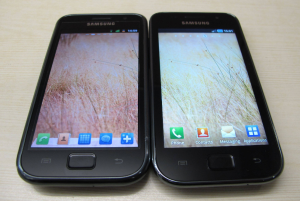There will be one billion smartphone users in 2013 and most of them will need some sort of text entry. To help people to enter text on mobile devices we aimed at studying how people type with a large number of participants. Therefore, we developed a typing game that records how users touch on the standard Android keyboard to investigate users’ typing behaviour. We published the typing game Type It! on the Android Market. The game got installed by 72,945 players and enabled us to collect 47,770,625 keystrokes from around the world.
Using the data we identified three approaches to improve text entry on mobile phones. As we found a systematic skew in users’ touch distribution we derived a function that compensates this skew by shifting touch events. In addition, we changed the keys’ labels by shifting them upwards and visualize the position where users touch the keyboard. By updating the game we conducted an experiment that investigates the effect of the three approaches. Results based on 6,603,659 further keystrokes and 13,013 installations show that visualizing the touched positions using a simple dot decreases the error rate of the Android keyboard by 18.3% but also decreases the speed by 5.2% with no positive effect on learnability. The Android keyboard outperforms the control condition but the constructed shift function further improves the performance by 2.2% and decreases the error rate by 9.1%. We argue that the shift function can improve existing keyboards at no costs.
Our paper with the lengthy title ‘Observational and Experimental Investigation of Typing Behaviour using Virtual Keyboards on Mobile Devices‘ that describes our work has recently been accepted at CHI 2012.








 Hit the Rabbit!
Hit the Rabbit!




